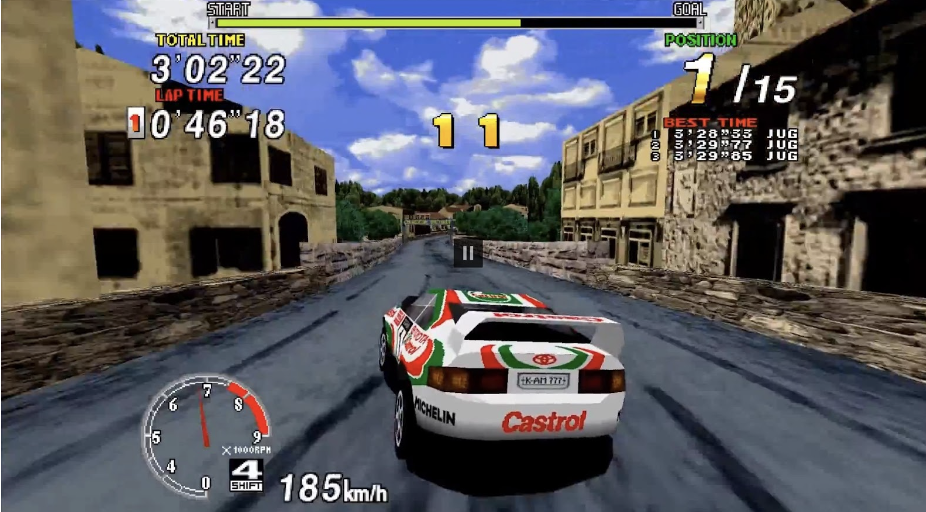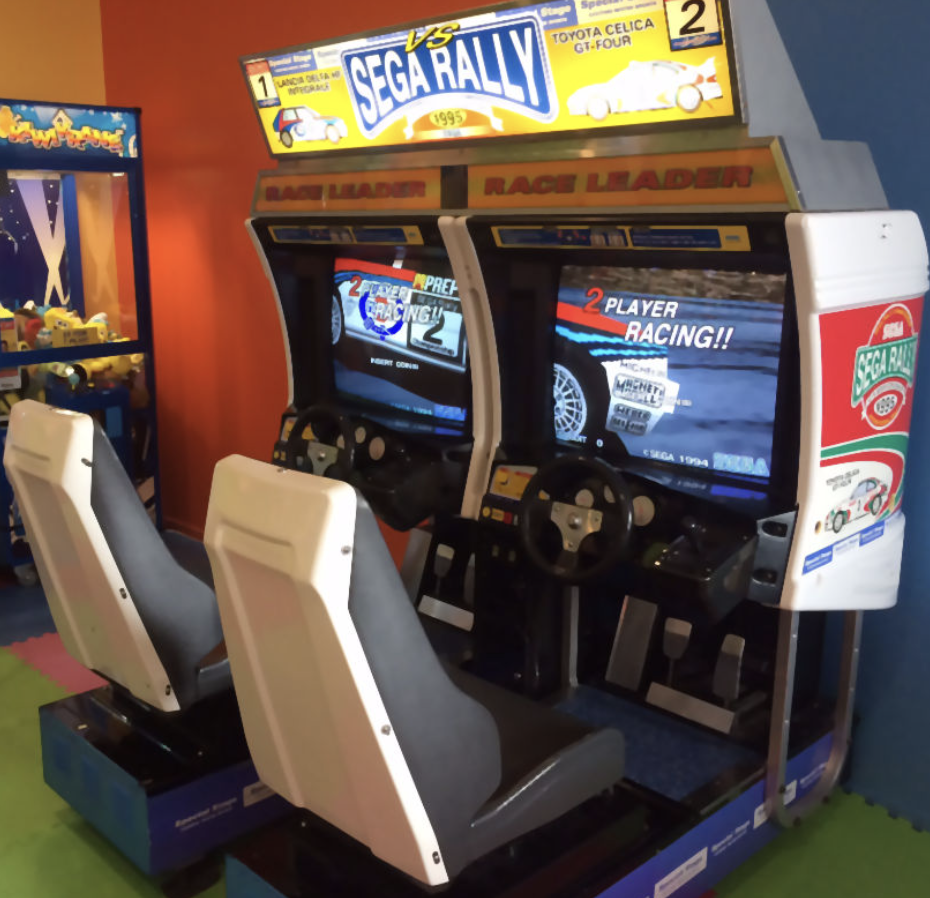Video game time seems to stretch and condense depending on the flavor of the moment, with certain genres laying dormant for years and then springing to life with a resurgence of interest. Perhaps that explains why for about a year’s worth of time spanning from one October to the next in 1993 and 1994, a racing game Renaissance occurred in the world’s arcade. Namco’s Ridge Racer helped usher in an age of more realistic racing titles that relied on 3D polygonal graphics. Sega fired back with Daytona USA, a stock car racer with three tracks to Ridge Racer’s one, and a force feedback steering wheel. Even Nintendo (in partnership with Midway), got in on all that early ‘90s racing action with Cruis’n USA, a racing title that attempted to up the ante by seating players in something resembling an actual car that moved along with the twists and turns of the race track.
But another title released at the tail end of 1994 had something special that its contemporaries just couldn’t match: the feeling of dirt.
Sega Rally Championship came to us from director Kenji Sasaki, who had previously worked on team Ridge Racer at Namco. Sasaki’s task with this new arcade title from Sega was simple: Design a unique racing experience that could stand up to games like Ridge Racer and Daytona USA. To accomplish this task, Sasaki and his team settled on rally car racing, despite its lack of popularity in Japan at the time. Rally offered Sasaki’s team the opportunity to fill their game with impactful sound design to express the white-knuckle thrill of the race audibly, but that wouldn’t be enough to make the game stand apart.
Sega Rally Championship’s truly unique selling point was the feeling of driving across different surfaces. By modern gaming standards, the idea that a dirt track would feel different from an asphalt is rudimentary, sure. But take it back to the ‘90s! Sega Rally Championship was the first game to change up the way a car handled if it was drifting across dirt instead of concrete, for example, requiring players to pay attention to the driving surface as they drifted and slid around the game’s race tracks.
In “World Championship” mode, players raced across “Desert,” “Forest,” and “Mountain” stages which were based on the African savanna, Yosemite National Park, and Corsica respectively. An added bit of competition was thrown into the mix by basing the player’s starting position for each race on their results from the previous one. In each stage, players must overtake their competition to crawl up the leaderboard. Should they hold first place at the end of the third stage, a fourth circuit called “Lakeside” is made available.


Sega Rally Championship earned its place in racing game history by being the first game to change up its handling to match different driving surfaces, but the game’s impact was felt in a number of other ways as well. For starters, Sega Rally Championship became an important title in the life of the Sega Saturn, Sega’s next console after the Sega Genesis (or MegaDrive) and its family of add-ons and upgrades. The Saturn version of the game sold more than a million copies. Colin McRae Rally developer Codemasters identified Sega Rally Championship as highly influential with Producer Guy Wilday going so far as to say that the basic premise of the Colin McRae Rally games was based around the way Sega Rally Championship controlled.
Of course, Sega Rally Championship also ignited its own line of sequels, the Sega Rally series, starting with Sega Rally 2 in 1998, Sega Rally 2006, Sega Rally Revo in 2007, and finally Sega Rally 3 in 2008.
